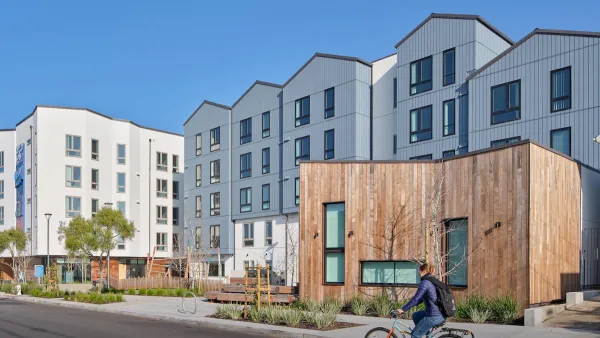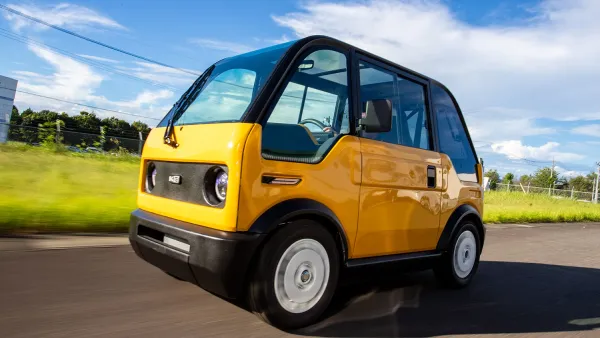Perhaps no American city is as defined by a single architectural style as Washington D.C. is by classically inspired architecture. Roger K. Lewis argues why the nation's capital needs to break from its historical antecedents.
Recent debates over Frank Gehry's non-traditional design for a memorial to Dwight Eisenhower have brought back to life a simmering debate over the "appropriate" architectural style for D.C., which is of course defined by classically styled government and civic edifices such as the U.S.
Capitol and White House; the Supreme Court; Union Station; the National
Gallery of Art West Building; the Lincoln and Jefferson memorials; and
the Federal Triangle. Leading the charge against Gehry has been the Washington-based National Civic Art Society, who are "dedicated to the traditional, humanistic practice of architecture,
urban design and the fine arts, advocating the humanist tradition as the
unrivaled source of artistic forms and conventions."
"People presumably associate classicism with stability, permanence,
authority, elegance and grandeur," observes Lewis, but "National Civic Art Society members
believe that modern architecture is devoid of these attributes. Thus, the society argues that Washington has been and should continue to be a city of classically inspired architecture."
Rather than looking at the debate around D.C.'s architecture as an either/or proposition between modernism and classicism, Lewis argues that architecture's 20th century transformation has allowed both to co-exist.
"In the 20th century, architecture underwent dramatic transformation.
Innovative materials, machines and construction methods appeared.
Unprecedented functional needs and building types emerged. New
technologies and building systems were devised, enabling architects and
engineers to address new physical, environmental, social and economic
challenges unknown in past centuries. This is why so-called modernism
encompasses so many styles, and why formulaic, one-size-fits-all
classicism makes little sense and has less meaning today."
"Most Americans, including architects, appreciate historic
architecture and are committed to its preservation. But I doubt that
many want or expect 21st-century architecture to look like it was
transplanted from the past."
FULL STORY: Why classical architecture makes little sense for today’s Washington

Planetizen Federal Action Tracker
A weekly monitor of how Trump’s orders and actions are impacting planners and planning in America.

San Francisco's School District Spent $105M To Build Affordable Housing for Teachers — And That's Just the Beginning
SFUSD joins a growing list of school districts using their land holdings to address housing affordability challenges faced by their own employees.

The Tiny, Adorable $7,000 Car Turning Japan Onto EVs
The single seat Mibot charges from a regular plug as quickly as an iPad, and is about half the price of an average EV.

Seattle's Plan for Adopting Driverless Cars
Equity, safety, accessibility and affordability are front of mind as the city prepares for robotaxis and other autonomous vehicles.

As Trump Phases Out FEMA, Is It Time to Flee the Floodplains?
With less federal funding available for disaster relief efforts, the need to relocate at-risk communities is more urgent than ever.

With Protected Lanes, 460% More People Commute by Bike
For those needing more ammo, more data proving what we already knew is here.
Urban Design for Planners 1: Software Tools
This six-course series explores essential urban design concepts using open source software and equips planners with the tools they need to participate fully in the urban design process.
Planning for Universal Design
Learn the tools for implementing Universal Design in planning regulations.
Smith Gee Studio
City of Charlotte
City of Camden Redevelopment Agency
City of Astoria
Transportation Research & Education Center (TREC) at Portland State University
US High Speed Rail Association
City of Camden Redevelopment Agency
Municipality of Princeton (NJ)





























